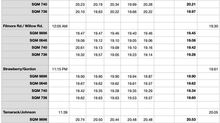Find Your Place
- Chuck Bueter
- Aug 10, 2015
- 3 min read
The 2015 Perseid meteor shower peaks Wednesday night (August 12) and into Thursday morning (August 13). Look up on either side of the peak dates, too. Try to find a site with a big open sky. If you can't get away from the lights, still observe the Perseids from home or anywhere you can safely do so. The moon will not interfere this week, so it's a good time to get outside at night with friends to witness "shooting stars."

Step 1
What are the Perseid meteors and how do you watch them? Plan for the Perseids with this guide from Sky & Telescope:
Get the Latest
Another good waypoint for Perseid observers is SpaceWeather.com. Get the latest on shower activity.
Watch the Sky
Get a sense of the weather from your own observations. The ADDS satellite data gives one perspective on the clouds. Other Great Lakes weather resources are under my Sailing page at http://www.nightwise.org/#!sailing/c33d.
Image courtesy off ADDS.
While you're awaiting meteors, you may be able to watch the International Space Station (ISS), Irididum flares, and other spacecraft events, thanks to satellite predictions from Heavens-Above.com. Image courtesy of Chris Peat.

Where to Chair
A key element is having a big sky—that is, a view to the firmament with few trees or hills obstructing the low horizon. With the wide view you have a better chance of catching the meteors before they brighten and fade. Sure, an urban or suburban sky will deny you the many faint and short Perseids, but the beauty of the Perseids is that they are prolific, with long, slow, and bright streamers abounding. I’m willing to stay close to home and sacrifice the faint dashes of light for the upside of convenience.
Early in the evening, the Perseids’ radiant (the constellation Perseus) is toward the northeast, so begin with your chairs facing that direction. As the hours progress, Perseus gets higher overhead and you need to broaden your view. Scan the sky overhead and look in your peripheral vision for streamers. The viewing is typically better late, like after midnight, when you are essentially looking out the front window of earth as it plows into the dust stream, akin to looking at snow in headlights at night instead of looking at snow out the back window of the car.

Plot It Live
Looking to be sciency interactive? Record the paths of Perseid meteors on a paper plate to illustrate the shower's radiant. Activity: Meteor Shower includes a template for drilling holes in a stack of paper plates for a group.
Eltanin is High
The 2015 sesquicentennial celebration for South Bend, IN, continues. If you're already gazing skyward, look in the constellation of Draco for South Bend's birthday star Eltanin, which is about 150 light years away. The starlight that left Eltanin in 1865 is just now reaching our eyes. Print out the Activity: Make a Simple Star Finder With Eltanin at my First Midnight page to help you find Eltanin, which is high toward the north when the Perseids are peaking.

Scope Out $150.00
A telescope won't help you see the Perseid meteors, for they are fleeting streaks of light across a large area of sky. However, since you're already stargazing, in South Bend you can check a Galileoscope out of a public library for free to look at other celestial targets. Saturn starts the night out in the southwest, and the Milky Way is zooming overhead in mid-August.
While you've borrowed the telescope for a couple of weeks, become eligible to win $150.00 and other prizes simply by finding six targets in the Scope Out South Bend challenge.
Note Your Darkness
How dark is your night sky with no moon? Does sky glow from excessive lighting interfere? You can quantify your sky's quality with the Dark Sky Meter app for cell phones. Easily contribute your local measurement of the night sky quality to a global database. Thanks for being more aware of and sharing the value of dark skies.
Up Next
At astronomical twilight, 5:00 a.m. EDT, Orion is rising in the east. The waning moon does not interfere with the 2015 Perseids, for the thin crescent rises just before the sun. New moon occurs the morning of August 14.
But don't give up on the moon! Get ready for the next celestial spectacle--the total lunar eclipse on Sunday, September 27, 2015. Anticipate setting up to get a good sightline and low horizon to the southeast. Propose some sites for a Luna See event--let's see the lunar eclipse with others.









































